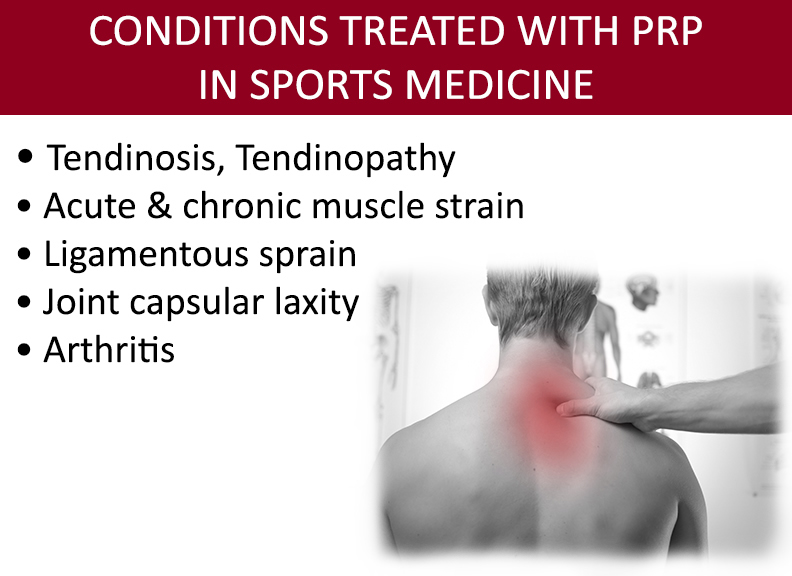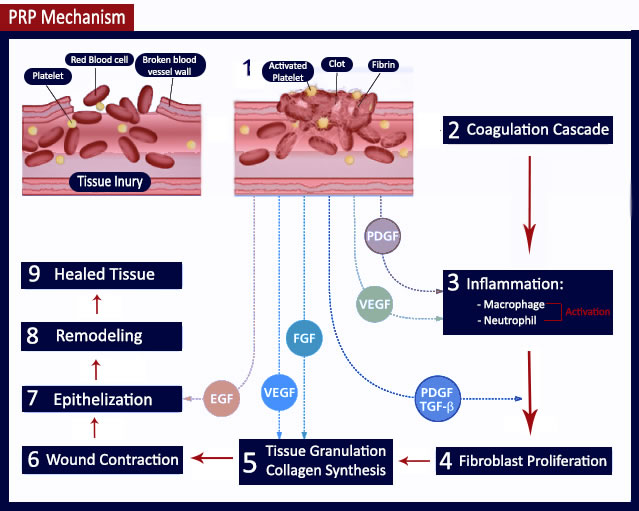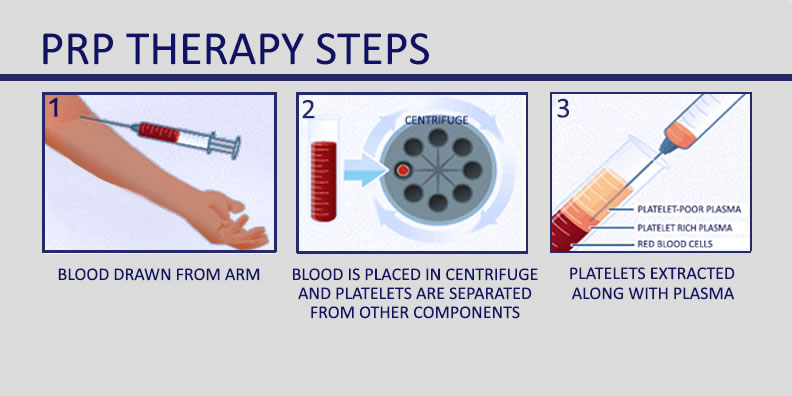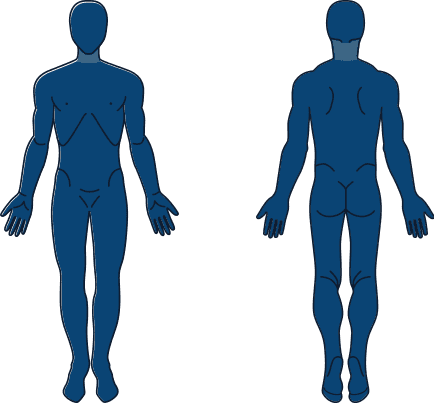What is PRP?

Platelet-rich plasma (PRP) is a treatment derived from a person’s own blood and delivered into an injured area of bone or soft tissue. Bone and soft tissue injuries heal in many stages, and platelets are one of the specialized cells that circulate through the blood as a source of both growth and signaling factors that are required for healing. For this reason, the use of PRP treatment in sports medicine is becoming a more popular option for non-healing or chronic injuries given its potential to give a biological boost to the healing process using only components of one’s own blood.
What conditions are treated with PRP?

PRP is a second line treatment for chronic injuries, usually in patients who have pain for more than several months. These injuries can include rotator cuff tears, tennis elbow, elbow ligament injuries, wrist injuries, hamstring strains, patella injuries, ankle ligament and tendon injuries, Achilles tendonitis, and plantar fasciitis.
How is PRP performed?

PRP is performed in the office during one visit. A sample of blood is obtained from the patient, and the blood is put into a centrifuge, which is a tool that separates the blood into many components. The portion of concentrated platelets is then injected into the site of injury under ultrasound guidance.
What happens after PRP?
It is usually necessary to avoid strenuous exercise at the site of injection for a short period of time after PRP, after which physical therapy or a rehabilitation exercise program is started to strengthen the muscles around the injury. Patients usually return to normal activity within 3-4 weeks, with significant improvements seen between 6-8 weeks and beyond. Anti-inflammatory medications (motrin, advil, aleve, ibuprofen) should be stopped a week before and after PRP treatment because they block the initial inflammatory response that PRP is designed to stimulate and optimize. Most patients respond well to only one treatment, but there are rare cases that require multiple treatments.
Is PRP effective?
Studies in animal models suggest that PRP treatment can improve healing in soft tissue and bone, noting increased number of healing cells and improved tendon strength after injection. There are several studies that suggest improved pain and function of various musculoskeletal conditions with PRP treatment. Overall, more studies are needed to prove the effectiveness of PRP treatment, but because PRP is created from the patient’s own blood, it is considered a relatively low-risk treatment with the potential to improve or speed healing.
For consultation regarding PRP,
please call 425-286-8271 or email frontdesk@maksportsmd.com
